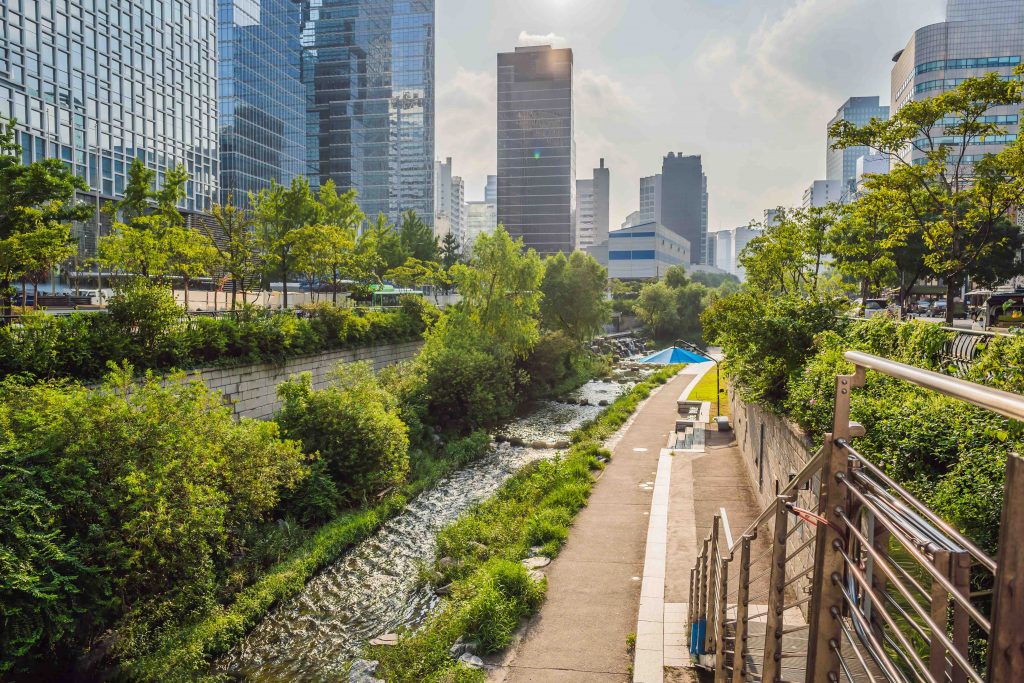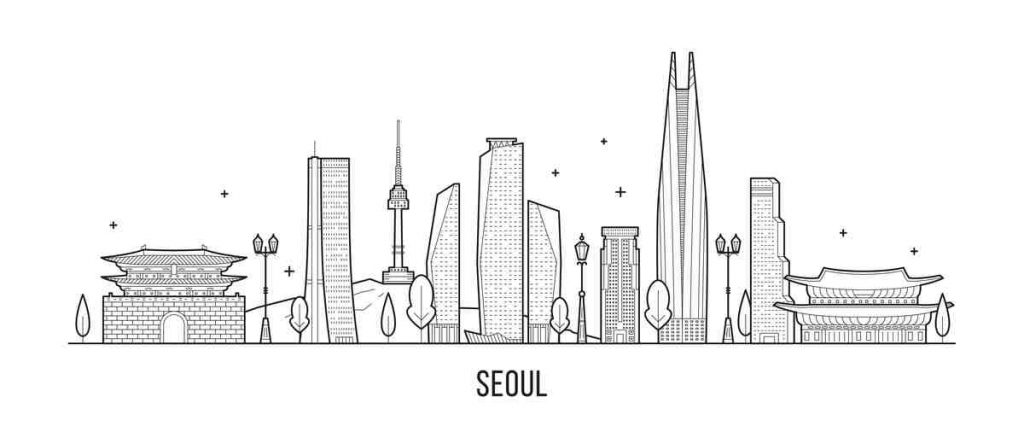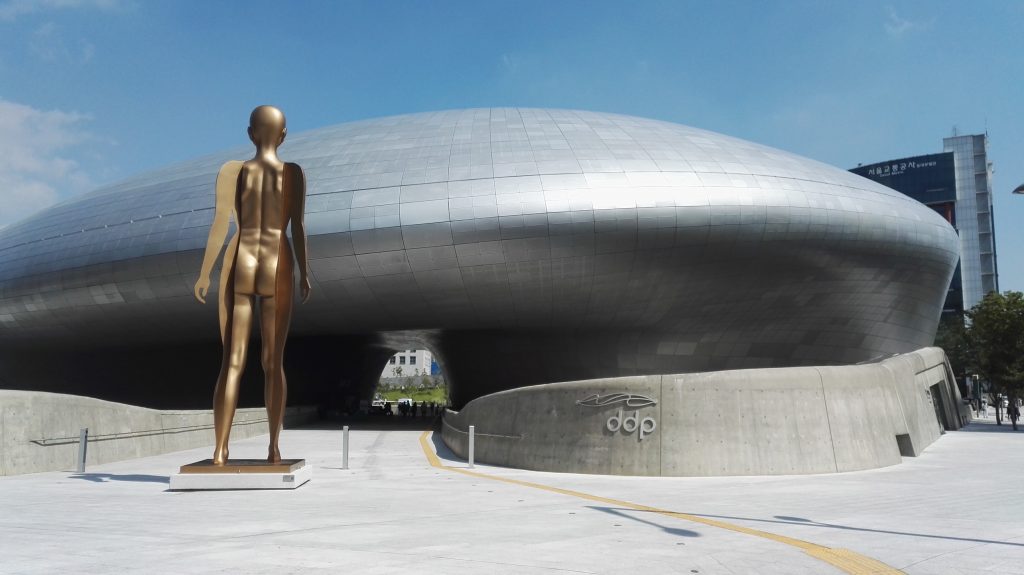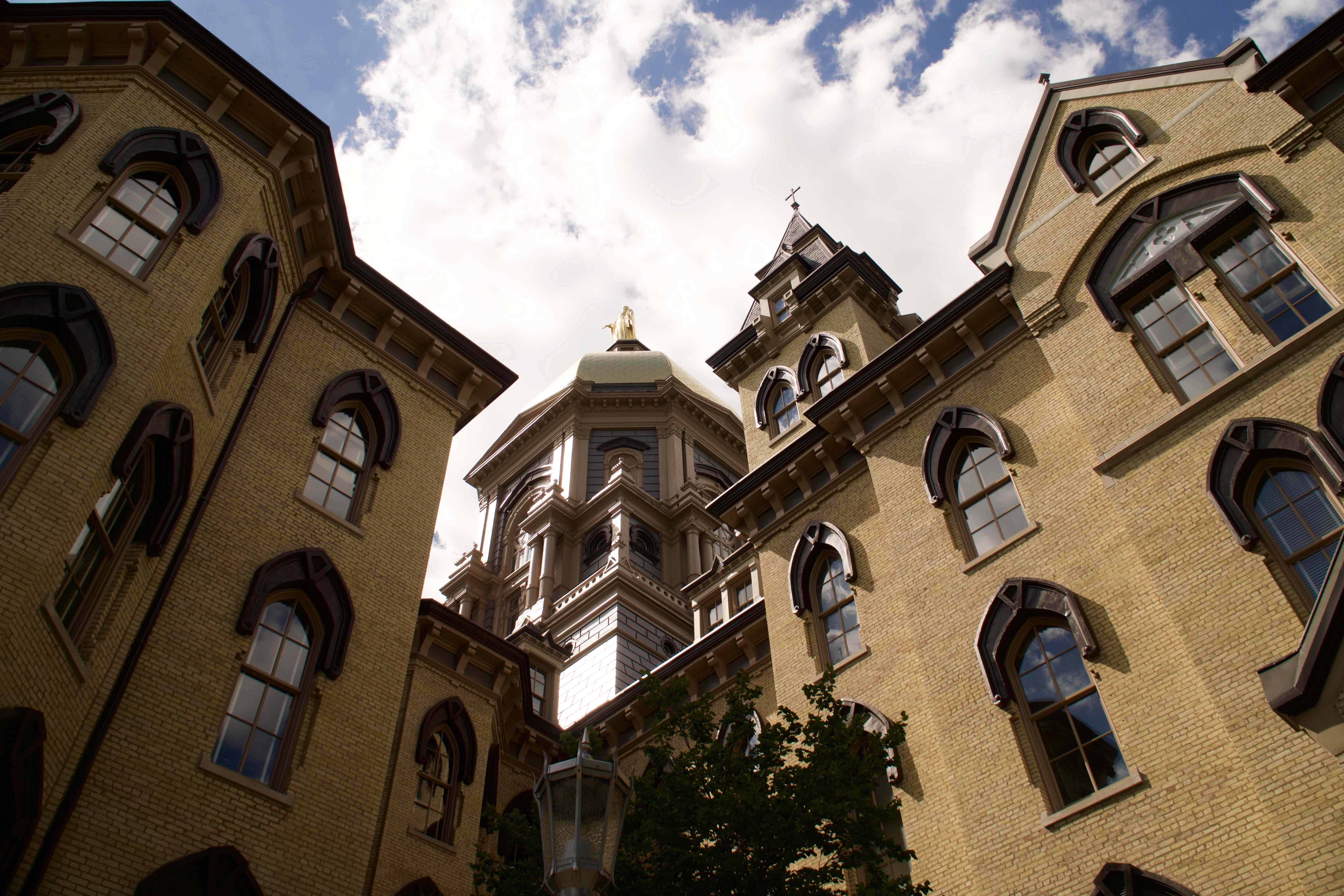Beside hosting the G20 World Summit, 2010 was a special year for Seoul. The city assumed the world capital of design granted by the International Council of Industrial Design Societies based in Montreal (Canada). It collected the baton left by Turin and with the challenge of being the first city in Asia-Pacific to assume this responsibility. The Decorative Surfaces stops this week in the Korean capital to follow the trail of the cities that have been WDO (World Design Capital).
Ten million people concentrated around a city model that aspires to become a sustainable example seems a complicated challenge a priori. Under this philosophy emerged in 2010, the Korean capital accepted the challenge of assuming the capital status under the motto of Design for everyone. However, it was “for everyone” from the prism of the human being in terms of the essence and related to the values of self-denial, reality, courtesy and wisdom that Koreans implement as life’s philosophy in the efforts they practice in life. A path that today has led them to be the main global reference when it comes to setting an example of what a smart city is.
The Cheong GyeCheon’s riverside as a starting point

Cheong GyeCheon’s riverbank may well be a symbol of this eagerness, the river that in the mid-1950s was tubed in concrete and waxed by the asphalt erasing it from the city’s physiognomy so a highway of three lanes could flow over its course. Perhaps the change of opinion on the sense of modernity of the mid-20th century with the beginning of the 21st century, or the high pollution rates that this infrastructure left in the city, served to make Koreans rethink the lifestyle in the city. It inspired them to work on a project more adapted to sustainable practice that has prevailed in the Korean capital since then.
The road intervention was reversed, and the exposed riverbed was recovered with a pedestrian and oriental garden rich in green spaces. According to The Landscapes Performance Series, the restoration meant, in addition to protection against floods and a notable decrease in the island effect of urban heat, «a reduction of air pollution by 35% and an increase in biodiversity of more than 600 %». Furthermore, the park has been a popular tourist and Seoul’s citizens destination since then, receiving an average of 64,000 visits a day.
“Very refined urbanism”

A city, an example and a designation that aroused the admiration of architects such as that of the Argentine Andrés Duprat. In an interview in El País, he asserted that «the ugliness of large structures in Seoul shares space with examples of highly refined urban planning». Moreover, those examples of green samples were promoted in each of the 25 independent districts composing the city and that were shown at a specific fair, the Seoul Design Fair. Already late in the dates of the capital status, in the fall of 2010 and which central setting was the Olympic facilities designed by Kim Swoo-geun for the 1986 Asian Games and the 1988 Olympics.
Internationally renowned speakers such as industrial designer Chris Luebkeman and more than 200 international and local presentations converged there with 2,600 recognized participants from 100 countries. The proposals were especially focused on the capital’s motto design for humans. Coupled with coexistence with the possibilities of urban combination and with nature as protagonists.
Other Seoul design nuclei chosen to celebrate the world capital of design were Hongdae, a quarter of the Mapo-gu district famous for its activity and nightlife; the luxurious Gangnam Sinsa-dong neighbourhood, with leading ready-to-wear design brands; and the Digital Guro Complex, an intermodal metro station located as a transformation centre and model of the most cultural postcards in the city, scenery of multiple film shoots and advertising spots
The choice of these very disparate landmarks by the capital’s organizing committee went, specifically, through their eagerness to mix entrepreneurs, designers, citizens. It was an experiment in social design in the context of such a significant multidisciplinary event.
Dongdaemun Design Plaza (DDP)

Zaha Hadid, the 2004 Pritzker-awarded Iraqi architect, left her signature style in Seoul a few years after the end of the capital year. She did so in March 2014, delivering the DDP as a legacy to the city, a cultural complex that in just six years is already one of the main symbols of Seoul. In its entrails it collects the essence of what the celebration of capital meant: design, design and more design for all. Both in the content and in the container.
The complex, in true Hadid style, bases its strength on a large amorphous and three-dimensional structure. It is an intervention that the Iraqi described as «metonymic landscape». All of this combined in a space made up of undulations that seem to combine water, its reflections and spatial flexibility with the daily traffic of citizens, tourists and professionals. A changing paradox that is traced by the tradition of the concept of design itself and that flows permanently, from the Korean perception of discipline. Additionally, it serves as a nerve centre for the exchange of ideas, expertise and experiences.
Seoul, ten years after the capital title, maintains very good architectural and creative health. A city in constant evolution that has managed to preserve the elements that guided the capital’s maxim when the DDP did not yet exist and all design lovers look, and continue to do so, towards South Korea.

